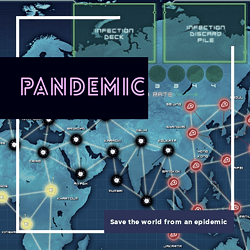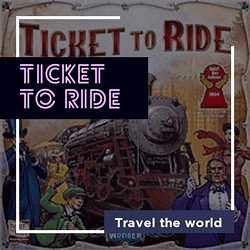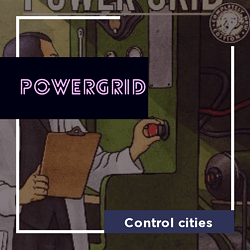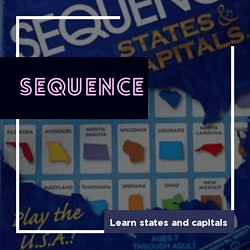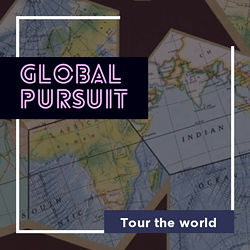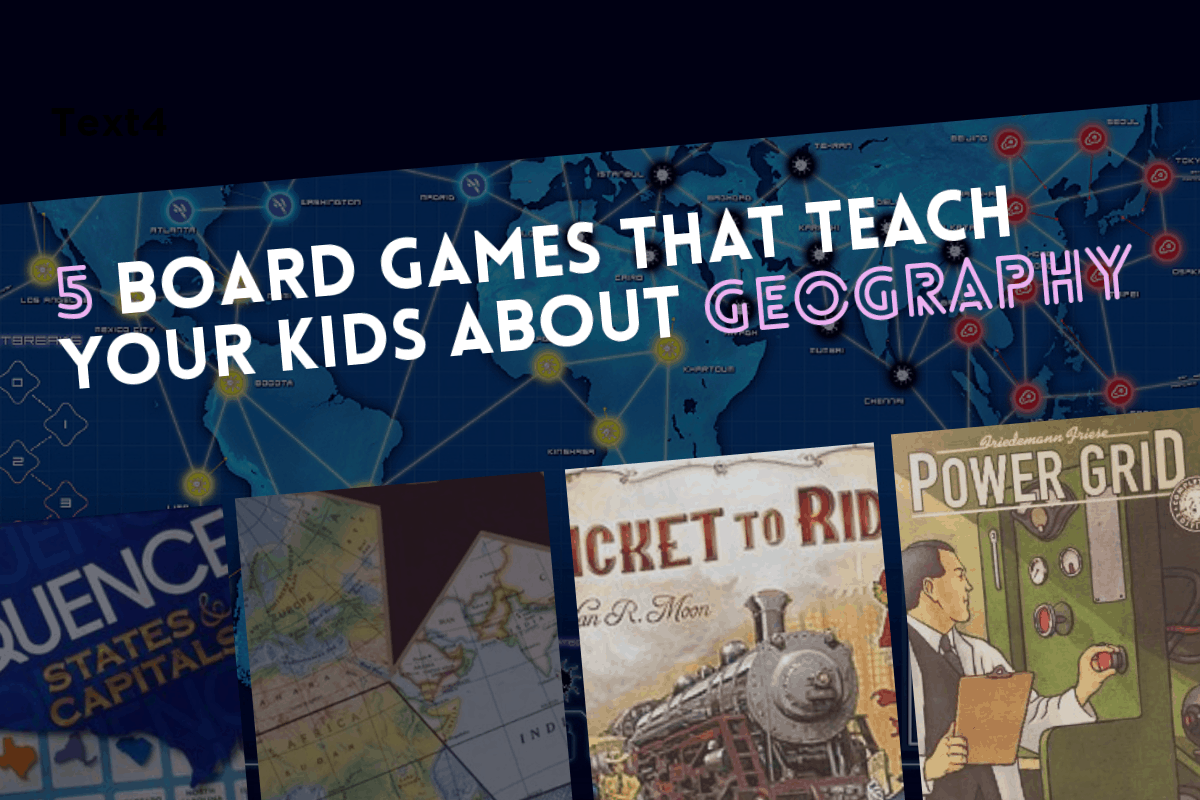I've always been in love with board games, and I passed on this passion to all my kids. However, for me, it was just all fun and games until my son once uttered, ‘wow, I can learn about cities from all over the world.’ I then realized how board games could be excellent educational tools.
I took advantage of this enlightenment and encouraged my kids to play more board games. They used to be so focused on games like LoL, Mystic Messenger, and Oregon Trail Games, but now, they would be the first to tell me that it's board game cafe time. That's where we hangout to test run the next board game we would buy.
There are tons of board games out there, and honestly, kids could learn so many things from many of these games like math, science, the environment. However, it'll take more than one article to talk about them all, so I'll cover only five board games that could help your kids with geography. I am terrible at geography, and I didn’t want my kids to be like me.
Let's dive into these five games!
Pandemic
This game would be our family's favorite. I guess because we’ve never won this game ever. Well, we did win once, but it was a false win because we missed something.
Pandemic is all about saving the world from the spread of four kinds of viruses. You play as a team, not as competitors. Everyone has a role to play, and together, you plan how to cleanse the world of the viruses.
It may seem easy, but we’ve wiped out the human race in this game so many times!
The board is a map of the world with labels of cities in different regions. Of course, not all cities are there (they won’t fit!), but there are enough major cities for a young child to memorize. Just after a few games, my kids would only take second to put blocks on specific cities because they already know where it is on the map. They already know in which continent a country is, and a city is.
In the game, the cities are all connected to each other, making it easier to move through them. Sometimes, though, a city doesn’t have a direct path to another city, forcing you to go through two or more cities to get to your destination.
For example, while Buenos Aires is right beside Santiago, there is no clear path to go to and from these two cities. You’ll have to move through Bogota and Lima from Buenos Aires because Santiago isn’t connected to anything other than Lima. Hence, apart from memorizing the location of cities, my kids also learn the proximity among cities, not to mention paths to and from cities.
With cities quite isolated from the others on the map, an avid player will eventually be able to memorize the paths, long or short, from one place to another. That’s an easy way of learning about places around the world.
Ticket to Ride
Sheldon Cooper would be enjoying this game if he doesn't have one yet. In this game, we compete with each other. Each one gets three destination cards, and the goal is for a player to finish the most extended destination in total; that means attempting to take the longest route from one place to another given the limited trains that a player has.
Unlike Pandemic, Ticket to Ride only maps a specific country or region. There’s Ticket to Ride Europe, US, Asia, India, and so many others. It’s an extensive list, and yes, we plan to get a hold of as many as we can.
As a player lays his trains on the tracks, another player can block his way. Hence, the player has to find another route. In the process of finding routes on the map, the kids get to memorize which cities in a country has the longest route between them and which one is the shortest. How many cities one could cover when attempting to take the long path is another key to memorizing the cities and their locations in relation to each other.
Unlike Pandemic, where kids could learn about the world; Ticket to Ride only gives kids cities about a country. The upside is that there are more cities. You can think of this as a magnified part of the Pandemic map. If in Pandemic, kids get to learn about major cities around the world, in Ticket to Ride, they get to learn even the smaller ones. This is a micro look into Geography, so if you could get all versions of Ticket to Ride, your kids would probably be memorizing so many places in one country so fast.
Power Grid
Our next game is Power Grid. This one shows a map of the US, so kids get to learn about cities in the US. However, what I find most interesting about Power Grid is that kids don’t just learn geography, but they also learn economic principles like supply and demand, and of course, math skills; that’s a big plus!
Power Grid is a competition. Each player aims to purchase a power plant to expand his or her power: the more cities in which a player has established a power plant, the better. It is an intense game. You must watch out not only for your cities but for your opponents’ cities. There are struggles in resources involved, so it is not so easy to keep your power. This game is fun because my kids learned how to manage their cities and resources, not to mention the relationship of one city to another in terms, not only of power, but also of location and distance.
The more often kids gets exposed to the games, the more easily they determine which cities best to start off with and that would give them the most advantage in taking over neighboring cities.
Sequence
Another game I find interesting is Sequence. There are so many sequence variants like Sequence Numbers, Jumbo Sequence, and again, a long list to mention. What is most helpful in geography would be Sequence States and Capitals. Honestly, we have not played this game. We are contemplating on playing it for our next visit to a board game café before deciding to buy one for our collection.
Sequence States and Capitals was suggested by a friend, who discovered my family’s love for board games. In this game, kids learn the capital of all 50 states in the US. Imagine that! Back in my elementary days, memorizing the capitals was what I hated most. This game will surely help my kids in school.
The game is all about placing chips on the board. The objective is to place a row of five chips, with each chip corresponding to the card in the player’s hand. Sounds easy, but it isn’t.
In Sequence States and Capitals, you’ll have to match the state in your hand to the state on the board. If you play this regularly, eventually matching and placing chips would come naturally, as you’d have memorized all the states and capitals.
Sequence is basically good for memorizing places, but in terms of relationship among or between states and capitals, it is not as full-pack as the first three, where you also get to learn proximity, math, economics, planning, etc.
Global Pursuit
Then there is Global Pursuit, a game we are having a hard time finding, but one that is highly recommended as it proves to be very the most helpful in learning geography since teaching this subject is its central point. A friend of mine insisted that I look for this game because it is not just fun, but entirely educational.
Global Pursuit is not just a map game, but a trivia game, in which each player is required to answer a geography related question. Now, that’s compelling kids to learn.
Each player would be given five pieces of pentagon-shaped parts of a map at the beginning of the game. Each player must place down this piece correctly and then answer a question, of course, successfully. There’s going to be one point for placing the map and another for answering the question. The player with the most points wins naturally.
At the onset, the kids may not be able to earn points if they are unaware of the map and how it looks like. They also would not earn points for not knowing much about geography. However, there is the key to learning there: the more they play this game, the more familiar they become with the map and the more often they would encounter questions, the answers to which, they will eventually remember.
There's One More
Okay, you might be thinking that most of the games I mentioned so far only fit older kids, so here’s a plus, United States Bingo, which even your 4-year-old can play. Here, kids will learn about the US, locations of states, the capitals, and even some industries. Each card would represent a US region, and just like the real bingo game, the first player who gets to fill up his or her card with chips would shout ‘Bingo!’ and wins. Of course, to be able to put that chip correctly, the kids will have to know what state, capital, or industry is being called, and check it on his board.
Having a young child play this regularly, there’s no doubt that he will learn which state is next to which other state, and where are the capitals and the different industries in different places are. It’s a fun way to learn geography.
Conclusion
A big question mark must be hovering over your head right now. Why board games? In education, repetition is one of the key strategies. Don’t you remember your pre-school teachers asking you to keep repeating the alphabet or basic addition of numbers one to ten? Then there’s the memorization of the multiplication table?
Repetition is one key to learning. So, if your kids keep playing these games, they will surely remember all these places in no time.
Besides, when the learning process is fund, kids retain information better. That’s why cartoons are so attractive to them, and why they mimic some behaviors from it. Since geography is one tough subject since it is founded on knowing places before you get to understand the relationship between these places, then making it fund is your best bet for your kids to learn.
So, go grab a board game and play with your kids. Not only will your kids learn, but you also get to bond as a family.
If you have other board games in mind, do let us know in the comment box below.
Author Bio:
Lyn is a freelance writer who writes about different topics such as computer software, mobile application, financial information, among other things. She has been engaged in writing how-to guides and informative articles directed for various kinds of readers. During her spare time, she loves to read fiction books and watch movies or TV series.
Tags
board game / games / Geography / Global Pursuit / learning / Pandemic / Power Grid / Sequence / Ticket to ride / United States Bingo
board game / games / Geography / Global Pursuit / learning / Pandemic / Power Grid / Sequence / Ticket to ride / United States Bingo

